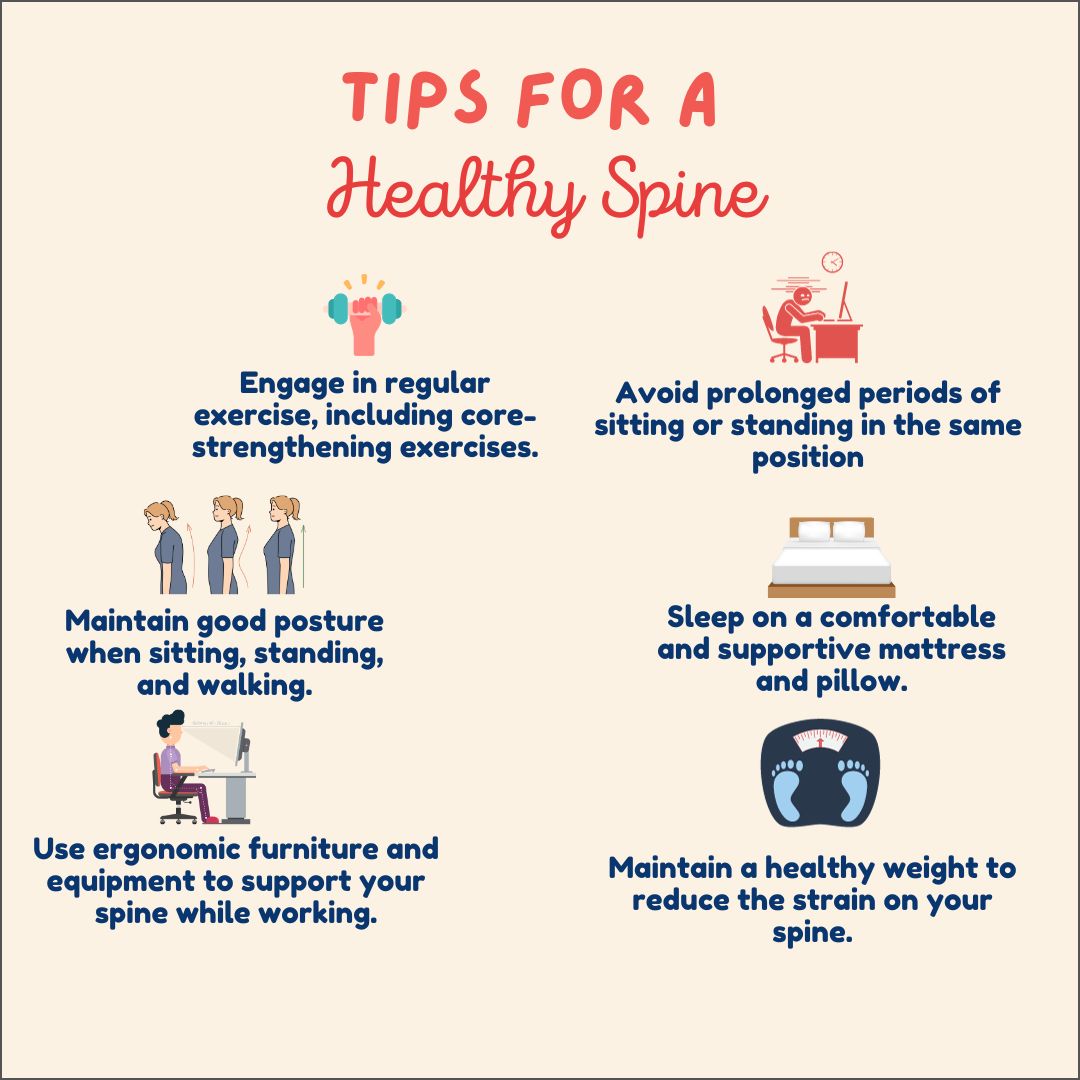Back pain is a common ailment that affects people of all ages and backgrounds. It can be debilitating, affecting one's daily activities and overall quality of life. However, there are several measures you can take to prevent back pain and maintain a healthy spine. In this comprehensive guide, we will explore a variety of strategies, from lifestyle adjustments to exercises and ergonomic considerations, that can help you achieve and maintain a pain-free back.
1. Maintain Proper Posture
One of the most crucial factors in preventing back pain is maintaining good posture. Poor posture can strain the muscles and ligaments in your back, leading to discomfort and pain. To improve your posture:
a. When sitting, keep your feet flat on the floor and your knees at a 90-degree angle.
b. Use a chair with good lumbar support to maintain the natural curve of your spine.
c. When standing, distribute your weight evenly between both feet and avoid locking your knees.
d. Consider using posture-correcting devices, or apps that remind you to sit or stand up straight.
2. Stay Active
Regular exercise is essential for a healthy spine. It helps strengthen the muscles that support your back and keeps your spine flexible. Some beneficial exercises include:
a. Core Strengthening: Exercises like planks, bridges, and leg raises help strengthen the muscles around your spine.
b. Cardiovascular Activities: Aerobic exercises, such as swimming, walking, and cycling, improve blood flow to the spine.
c. Yoga and Pilates: These practices focus on flexibility and core strength, which can prevent back pain.

Consult with a rheumatologist or orthopedic specialist for tailored treatment options.
3. Maintain a Healthy Weight
Excess weight, especially around the abdominal area, can put additional stress on your spine. Maintaining a healthy weight through a balanced diet and regular exercise can reduce the risk of back pain.
4. Lift Properly
Improper lifting techniques are a common cause of back injuries. To lift objects safely:
a. Bend at the knees and hips, not the waist.
b. Keep the object close to your body.
c. Use your leg muscles to lift, not your back.
d. Avoid twisting your body while lifting.
5. Stay Hydrated
Proper hydration is crucial for the intervertebral discs in your spine. These discs act as shock absorbers and rely on water to function effectively. Drinking enough water ensures that your spinal discs remain well-hydrated, reducing the risk of injury.
6. Quit Smoking
Smoking can reduce blood flow to the spine, hindering its ability to heal and causing faster degeneration. Quitting smoking can significantly reduce the risk of back pain and improve your overall health.
7. Ergonomic Work Environment
If you have a desk job or spend extended periods working on a computer, it's essential to create an ergonomic workspace. Make sure your chair, keyboard, and monitor are positioned correctly to avoid straining your back. Additionally, take short breaks to stand up, stretch, and walk around.
8. Sleep on a Comfortable Mattress
A supportive mattress and pillow are essential for maintaining a healthy spine. Your mattress should provide the right balance between comfort and support, ensuring your spine is in a neutral position while you sleep. It's recommended to replace your mattress every 7-10 years for optimal support.
9. Manage Stress
Chronic stress can lead to muscle tension and back pain. Incorporate stress management techniques like meditation, deep breathing, and progressive muscle relaxation into your daily routine to reduce the impact of stress on your back.
10. Maintain Flexibility
Maintaining flexibility is vital for a healthy spine. Consider activities like stretching, yoga, and tai chi to keep your back supple and reduce the risk of injury.
11. Avoid High Heels
High-heeled shoes can disrupt your body's alignment, causing stress on the lower back and altering your gait. Opt for comfortable, supportive footwear to maintain a healthy spine.
12. Stay Cautious with Backpacks
If you carry a backpack regularly, choose one with two shoulder straps to evenly distribute the weight. Avoid overloading it, and adjust the straps to fit snugly against your back.
13. Warm-Up Before Exercise
Always warm up before engaging in physical activities. This helps prepare your muscles and reduces the risk of injury. Simple stretches and light aerobic exercises can be effective for this purpose.
14. Stay Hygienic When Shovelling Snow
Snow shoveling is a common cause of back injuries, particularly in colder climates. If you have to shovel snow, maintain a neutral spine, lift with your legs, and take regular breaks to avoid straining your back.
15. Listen to Your Body
Perhaps one of the most important aspects of preventing back pain is listening to your body. If you experience pain or discomfort, do not ignore it. Rest, seek medical advice, and avoid activities that exacerbate the pain.
16. Regular Check-Ups
Regular check-ups with your healthcare provider can help detect and address any spine-related issues early on. Early intervention can prevent minor issues from developing into chronic conditions.
Consult with a rheumatologist or orthopedic specialist for tailored treatment options.
A healthy spine is crucial for overall well-being and quality of life. By adopting these strategies, you can significantly reduce the risk of back pain and maintain a strong, pain-free back. Remember that prevention is always better than cure, and making these adjustments to your daily routine will go a long way in ensuring a healthy spine for years to come. Always consult with a healthcare professional for personalized advice and guidance on maintaining a healthy spine.
Related Blog Articles:
.webp)














